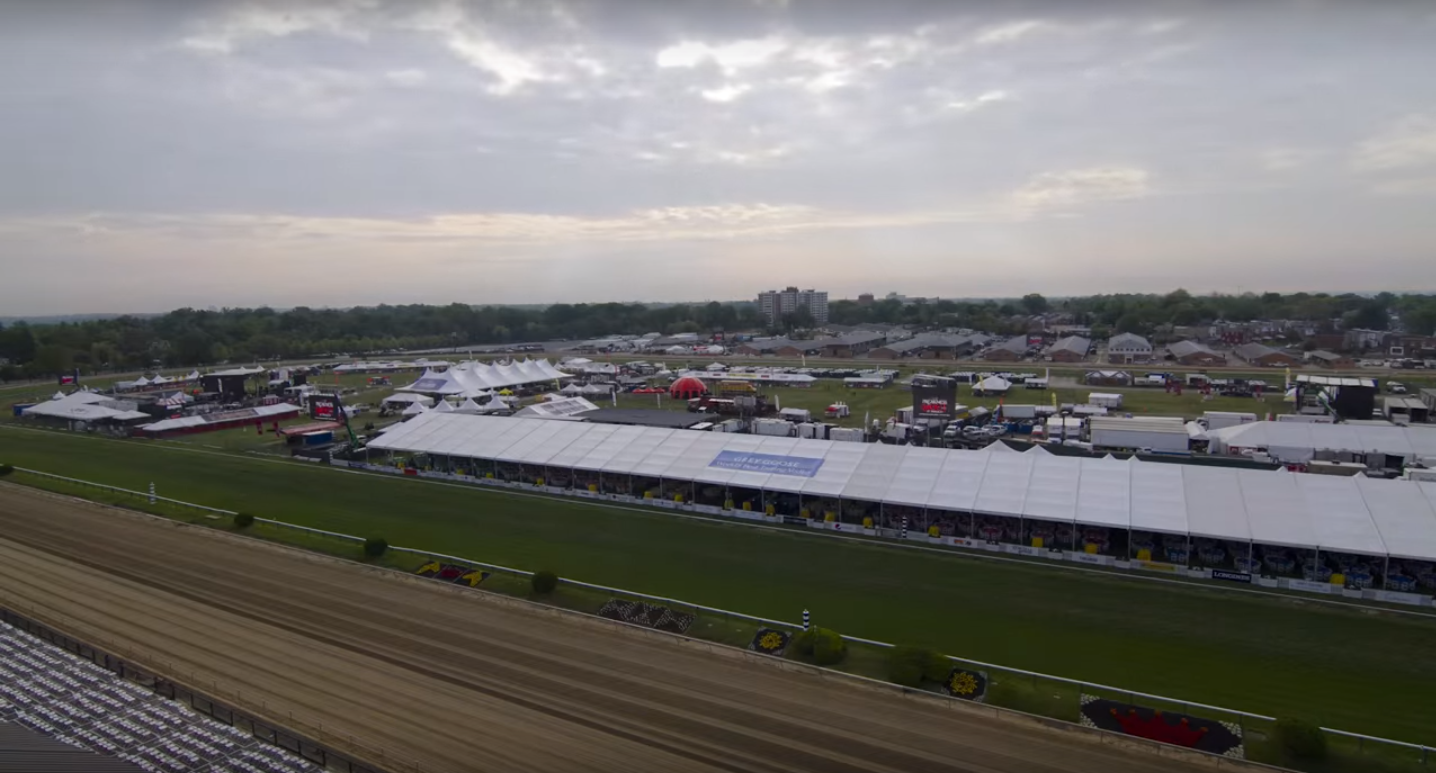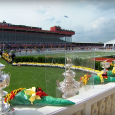Spring may still be a few weeks away, but, once again, the talk has returned. Before we blink, the Kentucky Derby will be here and then, two weeks later, the scene will shift to Pimlico Race Course in Baltimore for the Preakness.
Or will it?
Well, we know it will this year. But, each year, there is more discussion of horse’s racing’s second jewel of the Triple Crown leaving Old Hilltop. Pimlico is the nation’s second oldest racetrack (1870) behind Saratoga, but, unlike Saratoga, Old Hilltop is not only old, it’s tattered.
Like Saratoga, Pimlico sits in a residential neighborhood and, back in the day, the Parkside Heights section in northwest Baltimore thrived. That’s not the case anymore. The neighborhood is rundown, it’s tough to get to and, because of that, there are only 12 race dates per year at Old Hilltop — 12!
The Stronach Group owns the track and it also owns Laurel Racetrack, which sits 30 miles to the south of Charm City. The Stronachs have put significant money into Laurel and, if they had their way, would close Pimlico and move the Preakness — and all racing — to the better facility at Laurel.
The city knows this and she isn’t going down without a fight. The Maryland Stadium Authority commissioned a study and the result stated that Pimlico needs $424 million in upgrades to be viable again. This includes a new track or massive refurbishment of the old one, as well as shops and restaurants. The city and state believe that Pimlico could become a destination place — a place for racing, eating, concerts, festivals, carnivals, you name it. While that certainly sounds fun, the question is simple: Who is going to pony up the $424 million?
The Stronachs certainly don’t want to, as they already have a better facility to the south and can the city and state really ask its taxpayers for what will certainly be much more than $424 million when things are all said and done?
It’s the old political football. The mayor of Baltimore, Catherine Pugh, says that the Preakness belongs in Baltimore, yet that’s her only salvo. She offers no plan and, more importantly, no money. Basically, her argument is: “The Preakness belongs in Baltimore, because it just does.”
She wrote a letter and cited the ongoing rift between Frank Stronach and daughter Belinda, but doesn’t offer any financial contribution from the city.
The city is strapped and, deep down, they know the end is near. In order to make the Preakness viable in Baltimore, they would have to literally bulldoze the neighborhood, build a new track and surround it with shops, upscale housing and entertainment. The cost estimate of $424 million is beyond laughable. This is easily a $2 to $3 billion venture — and they know it.
Both the city and the state expect Pimlico’s owners (the Stronach family) to contribute mightily, but why should they? What is their incentive? They already have a racetrack and they certainly don’t need another. Horse racing is not a growing sport, so why build a new racetrack when you’ve spent hundreds of millions of dollars renovating Laurel?
Tim Ritvo is the COO for the Stronach Group and he echoes those sentiments.
“From a business perspective we struggle to see why one would rebuild this facility. We have another facility that we put a lot of money [into] and that actually gives a little bit of a better experience.”

The clouds are gathering over Pimlico Race Course (photo via YouTube).
This isn’t the Baltimore Orioles threatening to move unless the state and city build a new stadium and even though the Orioles and Pimlico are privately owned, we know there’s difference between sports that play in leagues and sports like horse racing. It’s no different than the hardware store owner leaving the city for the suburbs. When the Ravens or Orioles play, they get attention; when horses are racing on Thursday afternoon, very few care and even fewer attend.
What city and state officials are asking the Stronachs to do is inherently unfair. If Pimlico was the only racetrack that they owned in Maryland, things would be different. The politicians and the Stronachs would be working toward a Pimlico solution. The Stronachs would ask for public assistance. In exchange, they would contribute financially and the track would be refurbished or torn down and rebuilt. This is, in essence, like the Oakland Raiders saying, “Help us build a new stadium; if not, we will explore other options.”
Americans love traditions and nostalgia, I think. But change is inevitable and, truth be told, we’re all just visitors here. We do cling to some things perhaps too long, but, typically, once the old is gone, the sadness goes away quickly. Yes, people miss the old Yankee Stadium, but, deep down, they admit the new one is much better. The Orange Bowl was a grand old playpen; it hosted several Super Bowls. But it too has been replaced by bigger and better.
In Baltimore it is a bit different. Pimlico sits in a neighborhood and, for 149 years, it has been a fixture there. When the Orange Bowl was demolished, Miami got a new stadium. That won’t happen in Baltimore City. Once Pimlico is gone, it’s gone, so I can understand why city leaders are fighting to keep it. But business is business and there is no reason to have two Orange Bowls, two Yankee Stadiums and two Fenway Parks. Laurel is the better facility and since the Stronachs’ own the two tracks and the Preakness (yes, that’s included in the ownership), they should be able to move it to a place where it makes sense economically.
Baltimore would be wise to take the lead here. They should acknowledge the inevitable, make an announcement at this year’s Preakness that 2020 will be the last Preakness at Pimlico and go out in style. They could do the tributes, the farewell tour, as well as extending the Pimlico meet to go out with a bang. Instead, they will go down fighting, screaming and sad. Embracing the glory, the history and the nostalgia would be best. It won’t make everybody happy, but it would soften the blow just a bit.
Baltimore is known for its charm, crab cakes, the Inner Harbor and the Preakness. It will still be known for the first three and, after 150 years, that ain’t so bad.




